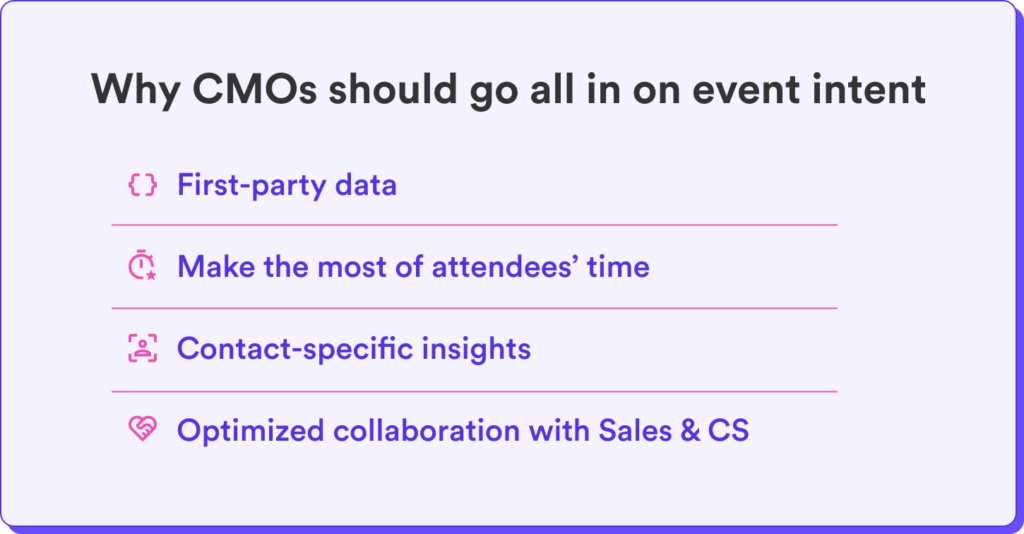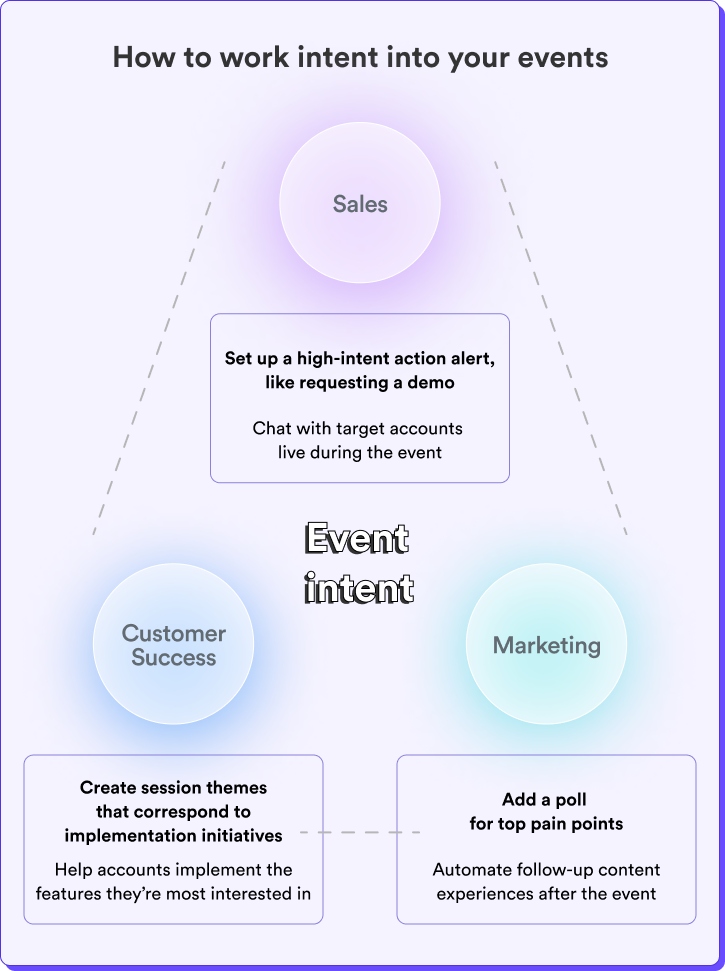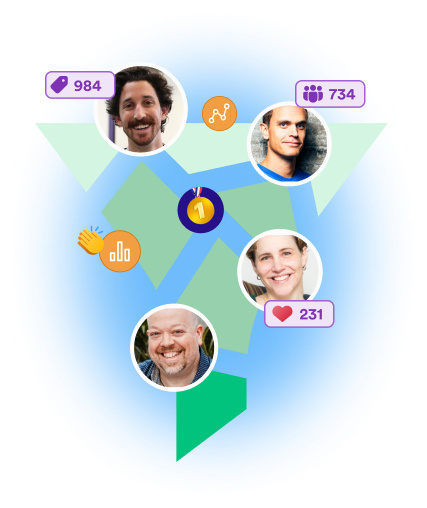80% of customers are more likely to buy from a brand that offers personalized experiences.
With companies relying on the same personalization tactics, sales and marketing teams need new ways to get buyers’ attention.
Here’s the good news: if someone adds your event to their overstuffed calendar, they’re interested in what you have to say.
Attendance and event interactions are stronger signals than just about every other format of intent data that B2B companies are using today.
A whole new wave of intent data is coming and it’s going to be huge: event intent.
Event intent is made up not only of registration and attendance, but also how each contact engaged with polls, sessions, chat, and more.
If you wanted to, you could organize an entire event designed to collect the exact sort of intent insights you crave from your target accounts (for new revenue) or current accounts (for expansion opportunities).
Let’s get into why I believe event intent deserves a long stint in the spotlight—and how you can use it.

Get to know your buyers—on your terms
Virtual, hybrid, and in-person events all offer their own set of zero-party data, which are insights that your audience shares intentionally with your brand. Think answers to event registration questions, polls, swag preferences, voting for experiences, etc. The data that your attendees willingly give you.
This zero-party data has a very different flavor than first-party data. Website analytics isn’t offered intentionally (despite cookie “acceptance”). Although necessary to compete and win today, experiences that are personalized with first-party data can make people feel like they’re being spied on. But with zero-party data, you can customize experiences based on information given willingly and proactively.
And let’s be real…third-party data, for its part, is dying a little more each year. So zero-party data can serve not only as a nice accompaniment to first-party data, but also as a powerful replacement for third-party data. If you drive paid traffic to your event registration pages, you can build out your knowledge of each contact before, during, and after the event using event intent data.
Respect the time attendees give you
It’s not like you want engagement data to fall through the cracks.
But it does, because you’re dealing with…
- Lack of automated data capture into attendee behavior for personalizing pre-and post-event outreach (leading to lower conversions)
- Limited ways to capture engagement and activity metrics that will help segment leads based on intent
- Unscalable methods for engaging with leads in the pipeline
- Poor visibility into customer intent for improving expansion and renewal rates
- Lack of data to identify champions and build programs to increase loyalty
Event intent solves these issues and allows you to finally capture and utilize that data so you can respect the time that attendees spend with you.
Make the most out of every detail. AEs can follow up with target accounts based on their interests, your marketing team can automate the delivery of resources relevant to each contact, and your customer success team can schedule implementation calls to help accounts set up the new strategy shared during an event.
Focus on the person, not just the account
AEs are always looking for data on individual contacts, especially for large accounts where dozens of people could potentially be your decision-makers, champions, or advocates.
Who’s most interested in your solution? Who wants to pull the trigger ASAP?
Event intent data allows you to amass a wealth of knowledge on who’s hungry for your solution and the pain points they’ve admitted to so your sales team can prioritize how they spend their time and find better ins.
Build stronger relationships and alignment with sales and CS
As a CMO, you make it your job to serve leaders on other teams. Event intent data offers a way to leave theoretical conversations on alignment behind. It gives you a real, practical way to collaborate and drive better results all around.
You can lead the charge in collecting event intent data and making it readily available for all of your revenue-generating teams.
Here are some ways you might help:
For Sales:
- Engage and target specific buyers and accounts at the right time using event engagement intent signals to book more meetings and accelerate pipeline
- Know your attendees better with detailed event activity insights, and arm your sales team with relevant event data to close deals faster
- Capture data points on buying intent that sales can leverage for outreach
- Set up meaningful interactions and touchpoints with high intent buyer groups to convert them faster with the right events
For customer success:
- Collect actionable customer data across event experiences to be used as a part of retention strategy
- Alert CSMs on what each account is interested in so they’re the first to know
How to proactively organize your events to collect meaningful intent data
There is a lot of data you can collect after an event. When you’re using Airmeet, you’ll collect this data automatically. We break event data into 4 categories:
- Registration & Attendee Data
- Session Performance
- Engagement Data
- CRM / Audience Segmentation
But, to really maximize the opportunity of event intent specifically (as opposed to reporting and analysis), you need to map out the data you want to learn before your event goes live. Goals for event intent need to happen during the planning phase.
Here are some examples of how to work intent into your events:
- For marketing – Add a poll for top pain points so marketers can automate follow-up content offers after the event.
- For sales – Set up a high-intent action alert, like requesting a demo, so sales teams can chat with target accounts live during the event.
- For CS – Create session themes that correspond to implementation initiatives so CSMs can reach out to their accounts and help them implement the features they’re most interested in.

Put event intent to use with Airmeet
This year, our product roadmap and content will focus heavily on helping our customers collect and utilize event intent data.
We’ll be teaching you how to strategically plan your events to generate more intent data and how to help each customer-facing team make the most of it. At the same time, our product team is hard at work developing intent scoring, unified attendee profiles, ROI attribution, high-intent alerts, and automated workflows.
Join us at an upcoming Eventions to stay informed of how to have quality interactions and generate more pipeline with event intent.





























